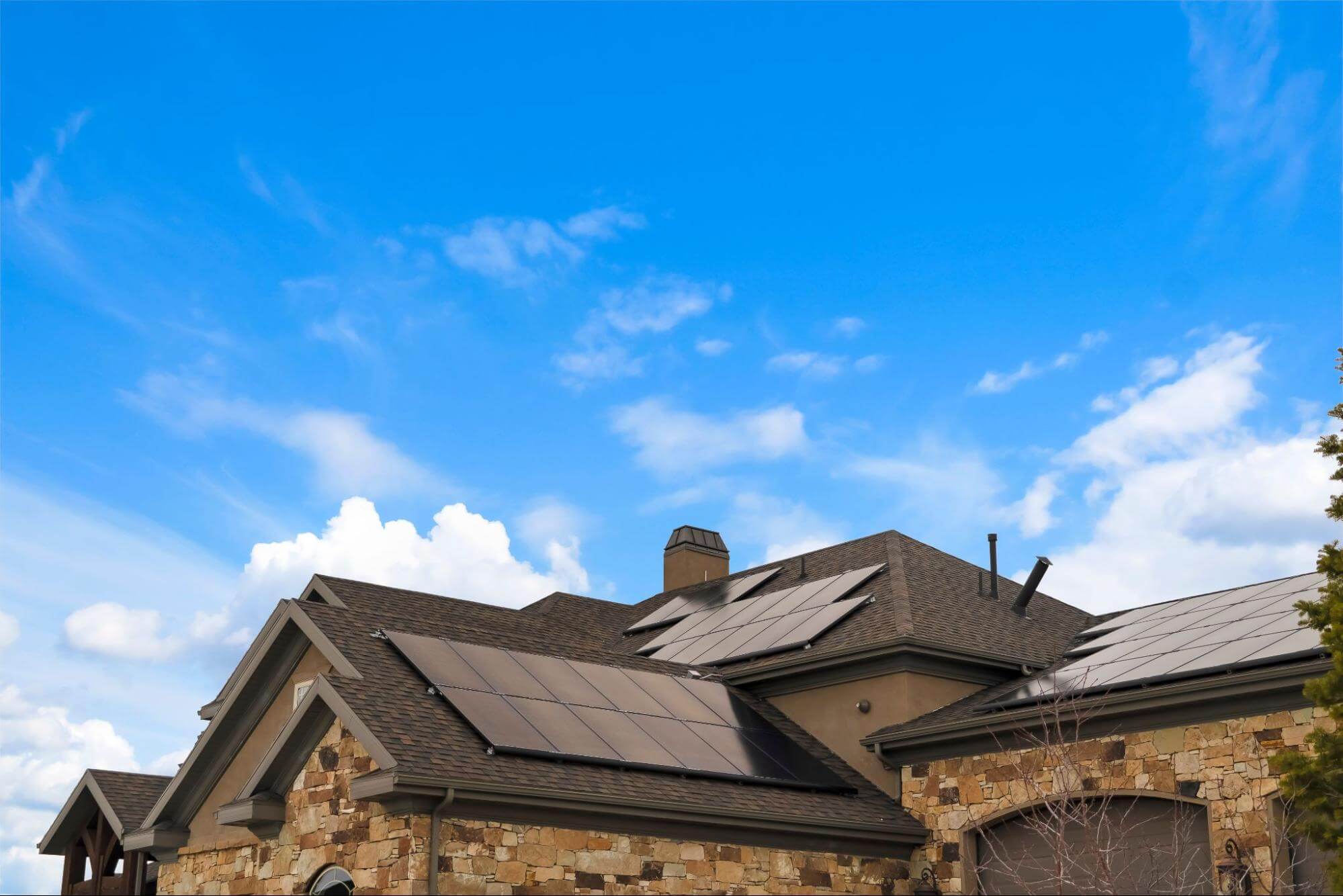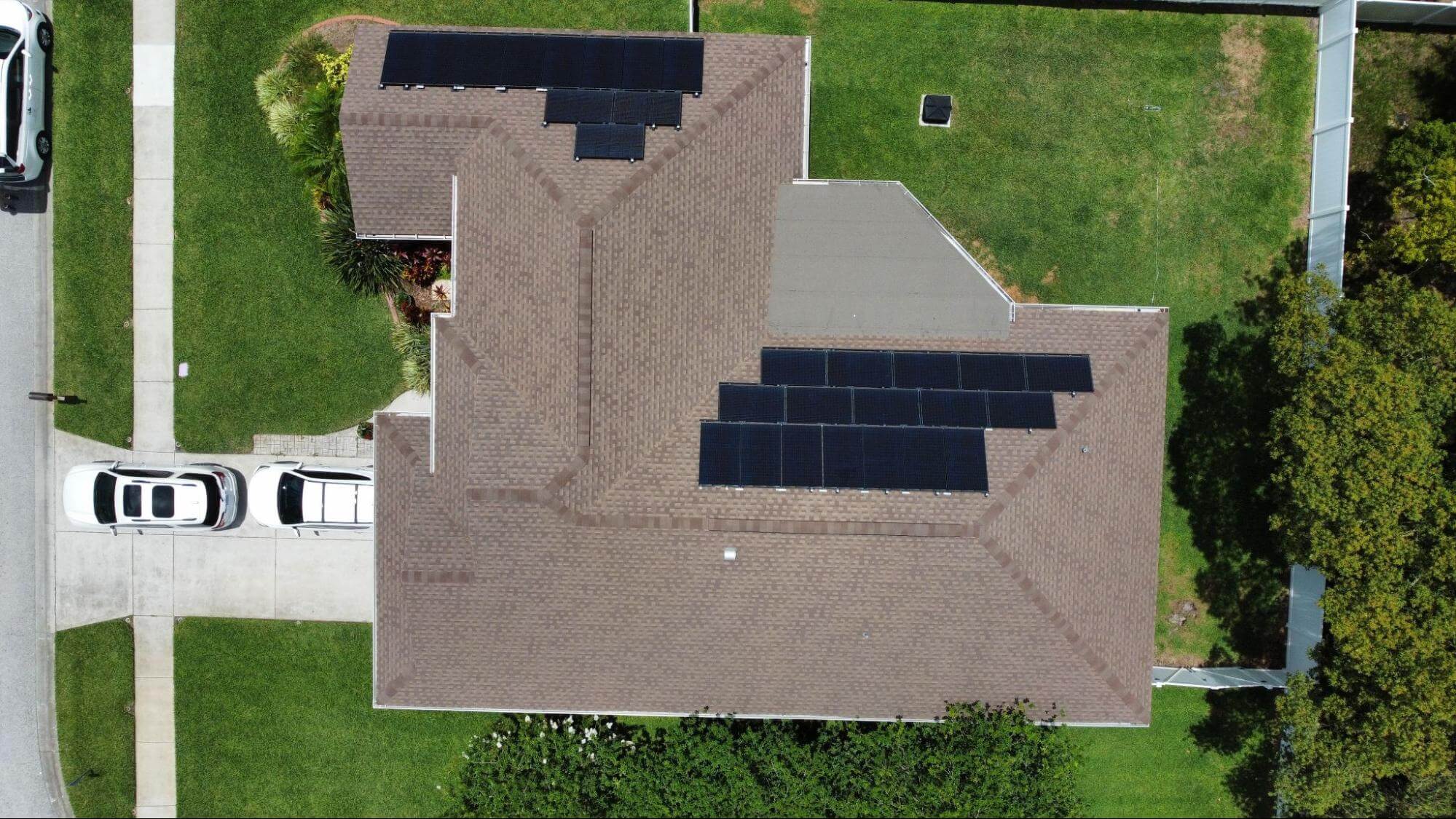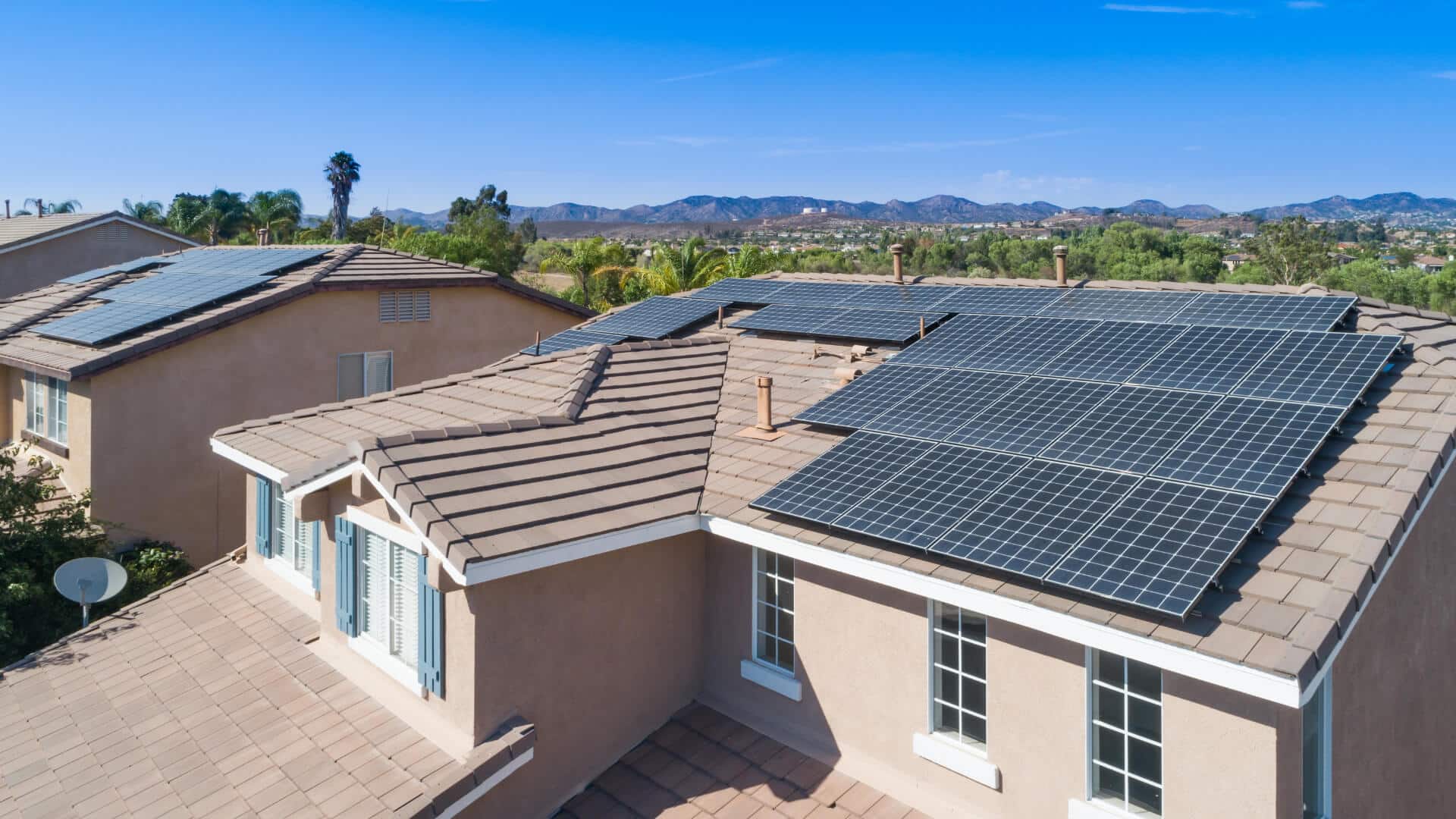Some states offer solar friendly policies that support homeowners. California has long been a leader in solar adoption, but many other states now offer strong incentives for homeowners nationwide. In this blog, we reveal the top five states for residential solar, according to technology news publication CNET. It’s important to remember that homeowners outside of these top five can still benefit from solar and battery storage.
What are the Top Five States for Home Solar?
1. New Jersey
One of the most impactful incentives is retail rate net metering, which allows homeowners to earn full credit on their electric bills for the excess solar energy they send back to the grid. This significantly shortens the payback period on solar investments. Additionally, New Jersey offers full property tax and sales tax exemptions for solar panel systems, helping homeowners save even more by reducing upfront and long-term costs.
Through the state’s updated Solar Successor Incentive Program (SuSI), homeowners can earn valuable energy credits by generating solar power. This means solar owners can enjoy bill savings and extra income, maximizing the return on their investment.
Additionally, the Garden State announced a battery storage incentive for homeowners on Nov. 12, 2024. Modeled after its successful SuSI program, New Jersey is proposing upfront and performance-based incentives for grid-connected and behind-the-meter home battery storage systems. This includes storage-only and solar-plus-storage systems that are not eligible for the SuSI program. With its generous incentives and strong commitment to clean energy, New Jersey continues to be an excellent place for homeowners to make the switch to solar.
2. Washington, D.C.
One of the biggest advantages of going solar in D.C. is its Solar Renewable Energy Credit (SREC) market, the most lucrative in the nation. Homeowners can earn over $400 per SREC, with each credit representing one megawatt-hour (MWh) of solar energy produced. These earnings can add up to thousands of dollars annually, dramatically shortening the solar payback period — sometimes to just three years. After that, homeowners can enjoy decades of free, clean energy.
D.C. also supports solar adoption through retail rate net metering, allowing solar owners to receive full credit on their electric bills for excess energy sent back to the grid. Additionally, solar panel systems are fully exempt from property taxes, helping reduce ongoing costs and maximize savings.
To make solar more accessible for all residents, D.C. offers robust programs like Solar for All, a low-income solar incentive that helps families reduce their energy bills. The district also promotes community solar programs, providing renters and homeowners who can’t install panels on their property access to clean energy.
While D.C. lacks a sales tax exemption on solar equipment and a state-level tax credit to complement the federal incentive, its strong SREC market and comprehensive support programs make it one of the most rewarding places for homeowners to go solar. Combined with the city’s goal of reaching 100% renewable energy by 2032, Washington D.C. continues to lead the way in making solar power profitable and accessible.
3. New Mexico
One of New Mexico’s standout incentives is its statewide solar tax credit, which allows homeowners to claim 10% of their solar installation costs, up to $6,000. This is one of the few state-level solar tax credits in the country, helping homeowners significantly lower their upfront investment and shorten their solar payback period.
The Land of Enchantment offers retail rate net metering, allowing homeowners to earn credits for excess energy sent back to the grid. However, utilities have some flexibility in how they compensate solar owners — especially for systems 10 kilowatts (kW) or smaller — which could result in payments at the lower wholesale rate rather than the full retail rate. Despite this, net metering still provides valuable savings on electricity bills.
Homeowners also benefit from full property and sales tax exemptions on solar panel systems, reducing both installation costs and ongoing expenses. For those who can’t install solar panels, New Mexico supports community solar programs, making clean energy accessible to low-income households through shared solar subscriptions.
With strong incentives across the board and abundant sunshine year-round, New Mexico continues to be one of the best places in the U.S. to invest in solar power.
4. Maryland
One of the key incentives available to Maryland homeowners is a $1,000 rebate for solar system installation. Although this rebate might not cover a large portion of the total installation cost, it still provides immediate savings on top of other significant incentives. Additionally, net metering in Maryland is among the best, allowing homeowners to receive full compensation at the retail rate for excess energy sent back to the grid. This helps reduce utility bills and boosts the financial appeal of going solar.
The state also offers full property and sales tax exemptions for solar panel systems, reducing both the initial cost and ongoing expenses. These exemptions help make solar more affordable in the long run. Maryland’s solar policies are further bolstered by a large solar carve-out in its renewable energy portfolio, driving investment in clean energy across the state.
For those who can’t install solar panels on their own homes, Maryland also supports community solar programs and low-income solar initiatives that provide access to solar energy for all residents, regardless of their financial situation or home type. These programs ensure that the benefits of solar energy are accessible to a broader range of Marylanders.
Although Maryland has a state solar storage tax credit, it is currently closed to new applicants, and the state’s SREC program, while beneficial, doesn’t offer the highest payouts compared to other states. Nevertheless, Maryland homeowners still have the potential to pay off their solar systems in just seven years, making it a financially wise decision.
With a combination of financial incentives, long-term savings, and accessibility through community solar programs, Maryland is an excellent state for homeowners looking to make the switch to solar energy.
5. Illinois
One of the most valuable incentives in Illinois is the Illinois Solar For All (ILSFA) program, which helps subsidize solar installation costs, particularly for low-income residents. This initiative, along with the Illinois Shines program, provides financial support to make solar installations more affordable across the state. Additionally, Illinois offers retail rate net metering, ensuring homeowners receive full compensation for the solar energy they send back to the grid. This benefit helps homeowners offset their energy costs, speeding up the payback period for solar systems.
Solar energy is also financially advantageous in Illinois due to the full exemption from property taxes on solar panel systems, which reduces the long-term cost of owning a solar installation. While Illinois doesn’t currently exempt solar equipment from sales tax, the combination of other incentives significantly lowers the initial installation cost, making solar a more accessible investment.
The state’s commitment to expanding solar energy is evident in its statewide low-income solar and community solar programs, which offer opportunities for all residents — regardless of their home type or financial situation — to participate in solar energy generation. These programs are especially important for ensuring that solar power is accessible to underrepresented communities.
While Illinois has made great strides in supporting solar adoption, it could improve by implementing tax exemptions on solar equipment and mandating additional community solar capacity to ensure that even more low-income households can benefit from solar energy. Furthermore, the state could explore the creation of Virtual Power Plant (VPP) programs, which would enhance the grid’s efficiency and provide additional benefits to solar users.
Overall, Illinois is a standout state for solar energy, with programs like ILSFA and Illinois Shines paving the way for a more affordable, accessible, and sustainable solar future for all residents. With more incentives on the horizon, Illinois is well-positioned to continue leading the way in solar adoption.
What if I don’t live in a Top Five State?

Not living in one of the top five states for solar incentives doesn’t mean solar energy isn’t a smart investment for your home. Every state offers unique opportunities to save with solar, and the benefits go far beyond local incentives.
Solar energy can make financial and environmental sense in every state. If you’re unsure about the incentives and savings in your area, our team at Enact Solar can provide personalized guidance to help you make the most of your solar investment.
Federal Incentives Still Apply
No matter where you live, the federal government offers a generous Solar Investment Tax Credit (ITC), allowing you to deduct 30% of your solar installation costs from your federal taxes. This nationwide incentive can significantly reduce your upfront costs, making solar more affordable and improving your return on investment.
Lower Energy Bills and Energy Independence
Even in states without top-tier incentives, homeowners can still lower their electricity bills by generating their own clean energy. If your state has high utility rates or frequent rate increases, solar can protect you from unpredictable energy costs and give you greater control over your household energy use.
Local and Utility Programs
Switching to solar means reducing your carbon footprint and helping to decrease reliance on fossil fuels. Solar offers homeowners a way to power their home using renewable energy, empowering homeowners to lower utility bills without emitting carbon. Whether you live in a top solar state or not, adopting solar power makes a lasting environmental difference and supports a cleaner future for everyone.
Sustainable Impact
By going solar, you’re contributing to a cleaner environment and helping to reduce dependence on fossil fuels. This positive impact is valuable no matter where you live.
What are the Top Five States by Residential Solar Installations?

California has led the country in the number of home solar systems installed, reaching over 1.5 million. While Sun Belt states were not represented in the top five list above, they represent the top four states by cumulative residential solar installations. This shows homeowners across the U.S. can benefit from solar. According to 2022 data published on Statista, the top five states by residential solar system installations included:
- California — 1,664,371 cumulative installations
- Arizona — 245,779 cumulative installations
- Texas — 217,274 cumulative installations
- Florida — 168,858 cumulative installations
- New York — 168,619 cumulative installations
Did You Know Solar is Still Worth it in California?
Even after the implementation of NEM 3.0, Enact customers in California continue to experience solid payback periods and long-term savings. Rising utility rates across the state make solar an even smarter investment, helping homeowners reduce energy costs and protect against future rate hikes. California continues to offer homeowners incentives, which can make a difference in making the switch to solar.
Enact makes the transition to solar simple by designing custom systems tailored to each household’s energy needs. As a California-based company with over ten years of experience, Enact has supported thousands of homeowners — longer than many other solar providers in the industry. After installation, our trusted solar monitoring platform helps Californians maximize their solar investment through easy monitoring, financial tracking and performance insights.
How Enact Supports Homeowners

Discover how solar can save you money, reduce your carbon footprint and increase your energy independence. Enact supports homeowners from proposal to post-installation solar monitoring. Our home energy advisors are present every step of the way and can answer any question you have about solar.
To get started and see your utility bills cut by 75% or more, schedule a free consultation with our team. Start your road to savings today.

